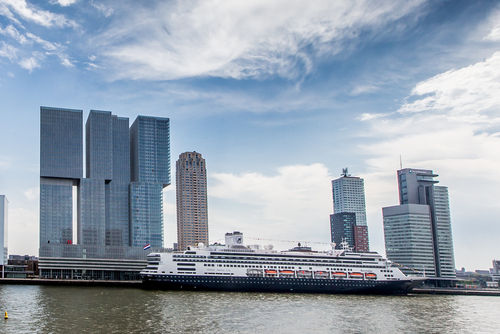Are You Ready to See the Stunning Buildings of Rotterdam?
- Erin

- Feb 9, 2020
- 2 min read
The Dam on the River Rotte is where the name of the second largest city in the Netherlands got its name, Rotterdam. Located on the North Sea, Rotterdam, is Europe's largest seaport, making it a major economic center of the Netherlands. The city's history dates back to the late 13th century when the dam was originally built. It became an official city less than a half-century later. In World War I it was a spy center for the German armed forces, but World War II was not as easy on the city. The city was almost destroyed by German bombing. This led to the rebuilding of some of the most amazing and modern architecture in Europe.

Rotterdam Centraal
Just outside the main train station in Rotterdam, you can see how the city is different from traditional Dutch culture. The station had a complete overhaul in 2014 but kept some of the original 1957 elements. This station adds to the futuristic feel with solar panels on the roof. Locals gave it the nickname "Station Kapsalon" after a local food specialty.

Kijk-Kubus
Moving away from the train station in the city center is Kijk-Kubus. Kijk-Kubus is often described by many things, from Cube Houses to an Urban Forest, and all are true. The dream child of architect Piet Blom, which is living in the heart of downtown but not missing out on the beautiful outdoors. As you walk through this lovely neighborhood, it is easy to see why this is the perfect mix of urban and forest.

Erasmus Bridge
Quite possibly one of the most iconic destinations of Rotterdam is the Erasmus Bridge. It is the first landmark you see when you enter the city through the port. It may be one of the most famous port entrances in all of Europe. The bridge has a unique design. It links the old city with the new city. This connection creates a lively area with trendy restaurants and bars.

De Rotterdam
Moving to the tallest building in Europe, De Rotterdam. It was built in 2013, and the three towers cover the area of a football field. The largest building in the Netherlands was built to honor the SS Rotterdam. This steamboat was part of the Holland American Line. It regularly traveled from New York to Wilhelminapier. This is the perfect place to grab dinner with a stunning view of the Maas River.
These are some of the modern architectural features that make this beautiful city a great place to visit. Ready to start planning your visit? Schedule a consultation today!




Comments